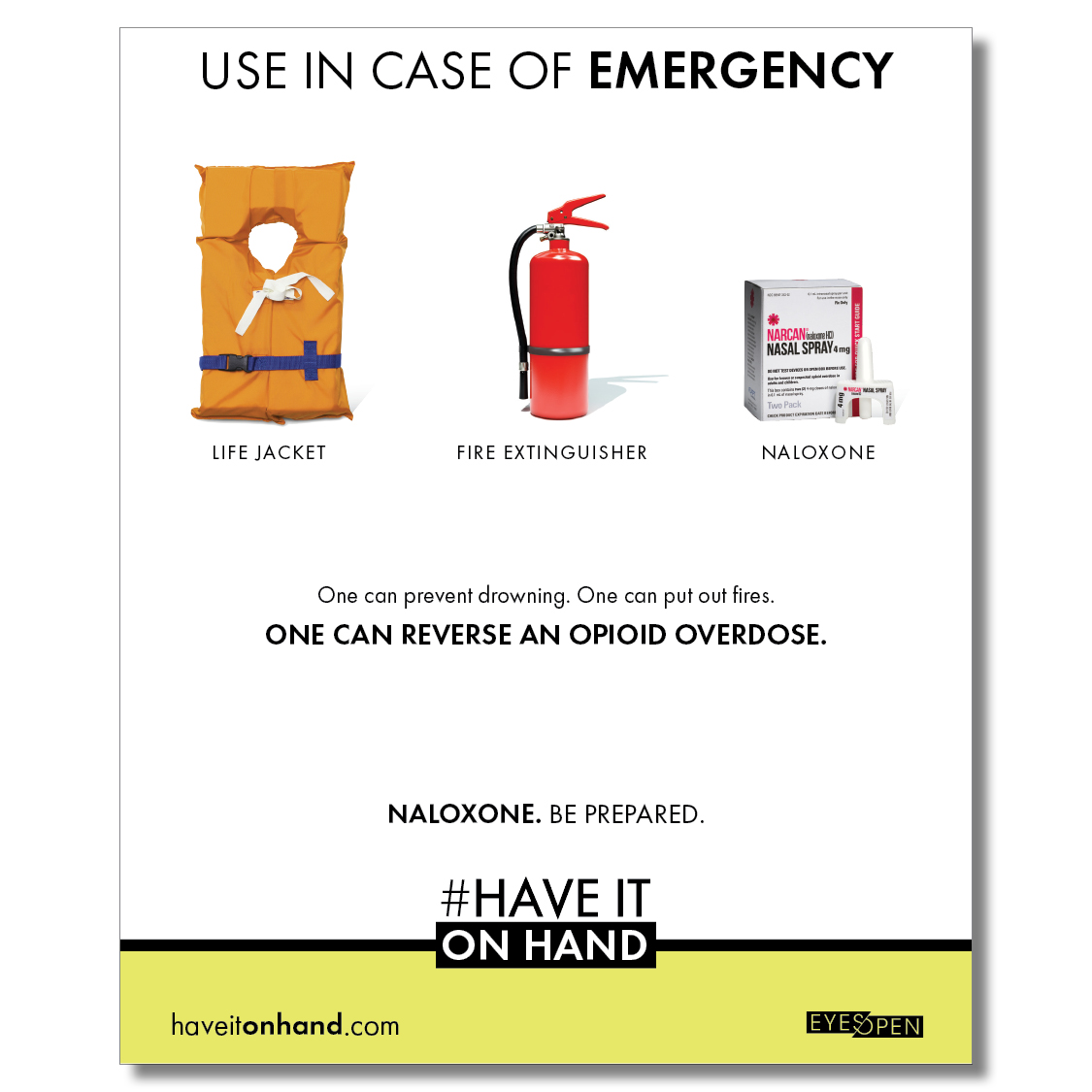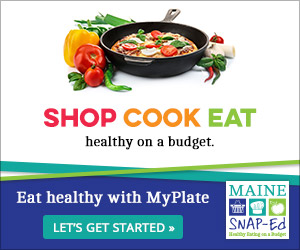
Categories:
Industry: Public Health
Stigma: Naloxone (Narcan) is a fail-safe for opioid drug addicts.
Our Charge: Increase awareness of Naloxone as a lifesaving, miracle drug used to treat opioid overdoses.
The Maine Department of Substance Abuse and Mental Health Services (SAMHS) approached Ethos to help them with a behavior change campaign designed to increase awareness and usage of Naloxone, a lifesaving drug used to treat opioid addiction. One of the biggest challenges of the campaign was the stigma attached to Naloxone (also known by the brand name Narcan) that it enables ongoing drug addiction, or saves people who shouldn’t, or don’t want to be saved. Our first step in addressing this stigma was to learn as much as we could about it. We conducted an internal assessment with members of the Naloxone Steering Committee, regional public health professionals and those organizations, and people who work with illegal drug users. We also worked with healthcare providers who treat drug users and University of Maine researchers who gather data on overdose drug deaths. The research showed that illicit drug users were mostly aware of Naloxone already, and frequently used it on their peers. However, for the vast majority of those users, any overdose was wholly unintentional. We also learned that for senior citizens, the chronically ill, and those suffering from confusion, overdoses were often caused by accidently taking more than prescribed. The research helped us to both narrow our target audience and frame the positioning of the campaign. Instead of positioning Naloxone as a fail-safe that first responders should administer to illicit drug users, we positioned it as an emergency, lifesaving device that everyone who lives with or frequently spends time with ANY person using an opioid should “have it on hand” – just like an inhaler for asthmatics or an epi-pen for those with allergies. The “Have It On Hand” campaign targeted anyone who is using opioids (both illicit and prescribed) as well as their friends and families. It reinforced that the vast majority of opioid overdoses are accidental and compared the possession and use of Naloxone to other lifesaving devices such as fire extinguishers and life preservers. You hope to never use them, but always have them on hand in case of an emergency. This positioning helped to reduce the stigma associated with Naloxone and normalizes having it available. Interventions for the campaign included the development of a website and mass distribution of “Naloxone Available Here” posters and static clings to prescribers, dispensers, and all public health outlets. We developed videos for broadcast and digital outreach and ran transit advertising on public buses in urban areas to ensure that our messages were reaching all facets of the community. The messaging was simple. “Most overdose deaths are preventable. Be Prepared. Have Naloxone on hand.”
Naloxone Poster
Industry: Education
Stigma: Community college isn’t “real” college, it is just settling.
Our Charge: Position community college as a smart, economical pathway to a better career.
The Maine Community College System approached Ethos to help them with a behavior change campaign designed to increase awareness of Maine’s Community Colleges and to invite inquiries to Maine’s seven (7) community colleges located throughout the state. One of the biggest challenges of the campaign was overcoming the perceptions around community college. After extensive research with stakeholders throughout the community college system, we developed a campaign that positioned Maine’s community colleges as a viable, affordable, local path to either a job, a credential of value, or as a first step to a university. The campaign, entitled “For Those Who Do” targeted those who could most benefit from attending community college and differentiated community colleges from other educational institutions. By communicating as a collective, we were able to address all of the benefits of community college – affordable, flexible, close to home – and help raise the tide for all seven of the colleges. To help reduce the “just a community college” stigma, we filmed real students at all seven campuses who shared how they addressed and overcame barriers to advancing their careers – showcasing the ways in which community college supported their ambitions. Our campaign targeted under-employed or unemployed adults (ages 25-45) as well as graduating high school seniors and their parents throughout the state of Maine. Messaging ran on broadcast television, cable networks, and digital OTT television as well as targeted digital campaigns on Google, Facebook, Instagram, and programmatic advertising platforms. At the time the campaign launched, the system projected a 5% decrease in enrollment. Today enrollment in all colleges has increased 4.2% system-wide – bucking national trends.Industry: Food and Nutrition
Stigma: It’s impossible to cook and eat healthy when you rely on SNAP benefits.
Our Charge: Provide resources for low-income Maine moms to learn how to shop, cook, and eat healthy on a budget.
Maine SNAP-Ed came to Ethos for assistance reaching low-income Maine moms and helping them change their behavior to eat healthier foods and make their SNAP benefits last all month long. One of the biggest challenges of the campaign was overcoming the stigma that healthy foods were too expensive or difficult to cook for busy moms relying on nutrition assistance or living with very low incomes. After extensive focus group research with SNAP participants, we developed a multiplatform campaign that positioned healthy foods as fun and easy to prepare, and SNAP-Ed as a provider of easy-to-understand, relevant, and useful information for shopping, cooking, and eating healthy on a budget. We established a new, fun, brand look for Maine SNAP-Ed, and carried the simple message (Shop, Cook and Eat Healthy on a Budget – It’s a SNAP!) through a variety of platforms. In addition, Ethos provided multiple training sessions for Nutrition Educators to share information through social marketing, social media, public relations and storytelling; we also developed a Social Marketing Toolkit. Our focus group research revealed that many of Maine’s low-income moms did not have access to a computer or internet at home, and many lacked a permanent address. For this reason, we focused our campaign outreach digitally, reaching moms on their smartphones.
And it worked. One year into the campaign, 81% of participants reported being confident in their ability to buy healthy foods for their family on a budget, and SNAP-Ed educators saw a 14% increase in program participation from 2014.
Our focus group research revealed that many of Maine’s low-income moms did not have access to a computer or internet at home, and many lacked a permanent address. For this reason, we focused our campaign outreach digitally, reaching moms on their smartphones.
And it worked. One year into the campaign, 81% of participants reported being confident in their ability to buy healthy foods for their family on a budget, and SNAP-Ed educators saw a 14% increase in program participation from 2014.

